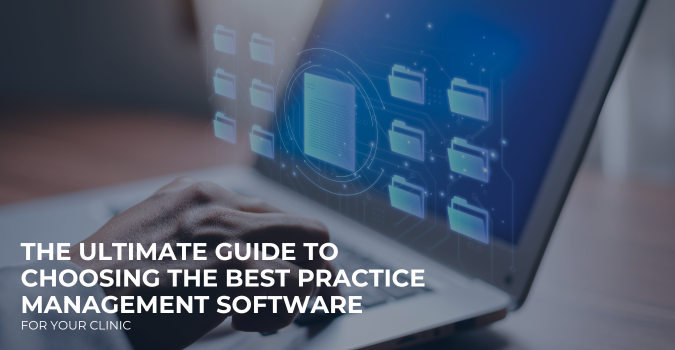In today’s fast-paced digital world, patients expect the same level of convenience and accessibility from…

Why Server Maintenance is Crucial for Healthcare IT Infrastructure?
The healthcare industry relies heavily on technology to deliver quality care. From electronic medical records (EMRs) to diagnostic imaging equipment, cyber security to cloud computing, everything is connected to a complex network of servers. These servers store and process critical patient data, making them the lifeblood of any healthcare organisation. In this blog post, we will discuss the importance of server maintenance for healthcare IT infrastructure and how it can contribute to improved efficiency, cost savings, and enhanced security.
Why Server Maintenance is Important for Healthcare Sector
Server maintenance is a critical aspect of maintaining a reliable and secure Healthcare IT infrastructure that helps to ensure the smooth operation of medical facilities. Here are some of the reasons
Data Security and Compliance:
Healthcare organisations handle vast amounts of sensitive patient data that are subject to stringent regulatory requirements, such as HIPAA (Health Insurance Portability and Accountability Act) in Australia. Regular server maintenance ensures that security protocols are up-to-date, vulnerabilities are patched, and data encryption is robust. Compliance with these regulations not only safeguards patient information but also shields healthcare institutions from legal consequences.
Uninterrupted Access to Patient Records:
In healthcare, every second counts. Any downtime or server failure can lead to disruptions in accessing critical patient records, resulting in delayed diagnoses and treatment. Regular maintenance helps identify and rectify potential issues before they escalate, ensuring seamless access to patient information when it is needed the most.
Optimizing Performance and Efficiency:
Over time, servers can become burdened with redundant data, obsolete applications, and outdated configurations, leading to a decline in performance. Routine server maintenance involves cleaning up unnecessary clutter, updating software, and optimizing configurations to ensure optimal performance. This not only enhances the speed of operations but also contributes to the overall efficiency of healthcare IT systems.
Preventing Data Loss:
Healthcare institutions cannot afford to lose critical patient data. Regular backups, part of server maintenance, act as a safety net against data loss due to unforeseen circumstances such as hardware failure, cyber-attacks, or natural disasters. These backups ensure that even in the face of adversity, patient records and vital medical information remain intact and can be swiftly recovered.
Facilitating Scalability and Innovation:
The healthcare landscape is dynamic, with technological advancements and evolving patient care methodologies. Regular server maintenance provides the foundation for scalability, allowing healthcare IT infrastructure to adapt to the changing needs of the industry. Moreover, it creates a robust environment for the integration of innovative technologies, such as Artificial Intelligence (AI) and Internet of Things (IoT), which can revolutionize patient care and administrative processes.
How Server Maintenance Enhances Healthcare IT Infrastructure:
Server Support is the proactive and reactive assistance provided by IT experts to ensure the optimal functioning of servers. Here’s how Server Maintenance contributes to enhancing healthcare IT infrastructure:
24/7 Monitoring and Issue Resolution:
Server Maintenance Services offer continuous monitoring of servers, identifying potential issues in real-time. This proactive approach allows for swift issue resolution, minimizing downtime and ensuring uninterrupted healthcare operations.
Regular Updates and Patch Management:
The network administrator will keep the server environment up-to-date with the latest security patches, software updates, and firmware upgrades. This helps in fortifying the defense against cyber threats and ensuring compliance with healthcare regulations.
Performance Optimization:
Server Support includes regular performance evaluations and optimizations. IT experts analyze server logs, identify bottlenecks, and fine-tune configurations to ensure optimal performance, even during peak usage periods.
Disaster Recovery Planning:
Server Support encompasses robust disaster recovery planning, including the establishment of comprehensive backup strategies and data recovery procedures. In the event of a server failure or data loss, quick recovery processes are in place to minimize the impact on healthcare operations.
Conclusion:
In the realm of healthcare IT infrastructure, server maintenance is not just a routine task but a critical component. That underpins the delivery of quality patient care. As technology continues to advance, and healthcare becomes increasingly reliant on digital systems, the importance of server support cannot be overstated. By implementing a comprehensive server maintenance plan and following best practices, healthcare organisations can improve the efficiency and reliability of their IT infrastructure, ultimately leading to better patient care and outcomes.
For comprehensive and specialized server support, healthcare institutions can explore robust solutions offered by providers, like MedicalIT.Services, whose expertise in healthcare IT ensures a tailored approach to the unique challenges of the medical field.




